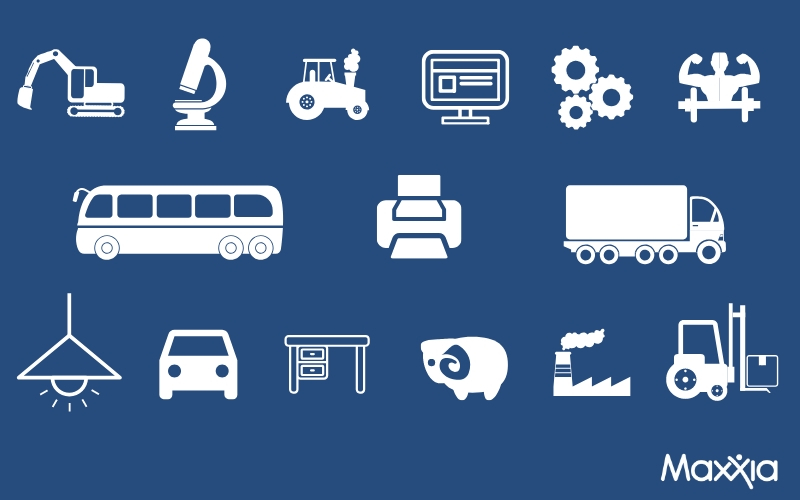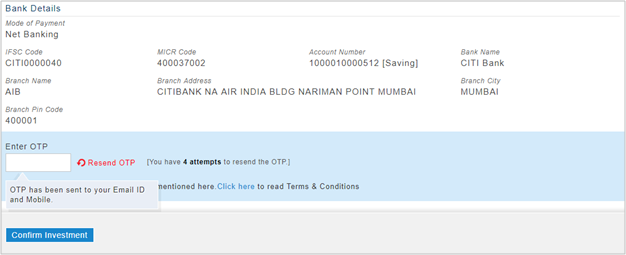Content

In the Weight Average Profit Method, each profit is multiplied by the number of assigned weights, i.e. 1,2,3,4.. Weighted Average Profit is calculated by dividing the total products of profits by the total weights, and the goodwill is ascertained by multiplying the weighted average profit by the agreed number of years’ purchase. Normal profit is a concept that takes a different view of an income statement. When calculating the cost of production, an economist assumes that all resources are paid, including the business owner.
As demonstrated with Suzie’s Bagels, normal profit does not indicate that a business is not earning money. Because normal profit includes opportunity costs, it is theoretically possible for a business to be operating at zero economic profit and a normal profit with a substantial accounting profit. Normal profit allows business owners to compare the profitability of their work with that of other possible business ventures. After assessing her projected accounting, normal, and economic profits she can make a more informed decision on whether to expand her business. Economic profit is more likely to occur in the case of a monopoly, as the company in question has the power to determine the pricing and quantity of goods sold.
- This method evaluates the opportunity cost of deploying the assets elsewhere when calculating a company’s regular profit.
- When a company reports a normal profit, it means that its economic profit is equal to zero, which is the minimum amount that justifies why the business is still in operation.
- However, you can account for accounting profit by looking at revenue and explicit costs (e.g., expenses and COGS).
- In this lesson, we will examine the difference between normal and supernormal profit, as well as losses, and discuss them in the context of different market conditions.
- The term normal profit may also be used in macroeconomics to refer to economic areas broader than a single business.
- However, economists also assume that firms may aim to maximize revenue (profit is revenue – cost), maximize market share or achieve a pre-defined level of profit.
The same concept of economic profit management teams utilize can be useful on a personal level. For instance, you might use the economic profit concept to determine whether to start a business. Karen assumes that all firms have the same opportunity cost, equal normal profit formula to $100,000 million. Total revenues range between $235,650 and $285,440 as the firms compete in the same industry. As a result, a corporation might make no economic profits yet still have an accounting profit that indicates a significant accounting profit.
Which intersection should a firm choose?
It is calculated using the Generally Accepted Accounting Principles (GAAP), and it takes the items on the debit and credit side of the balance sheet. To better understand normal profit, suppose that Suzie owns a bagel shop called Suzie’s Bagels, which generates an average of $150,000 revenue each year. Also suppose that Suzie has two employees, each of whom she pays $20,000 per year, and Suzie takes an annual salary of $40,000.

The marginal cost curve has been labeled MC curve which is initially decreasing and after its minimum point, increasing. The long-run average cost curve has been labeled as the LRACwhich shows the unit per cost of each output level. Economic profit is best calculated over long time horizons because short-term economic losses often become long-term economic profits. The same steel manufacturing company could conceivably lower its production costs in subsequent years, which would turn the initial economic loss to a long-term economic profit.
Economic Profit Analysis
Your economic profit can vary depending on economic principles and opportunities. On the other hand, in uncompetitive markets, companies earn positive economic profits due to the market power of dominant businesses, the lack of competition, and the existing barriers to entry. The companies can collude to restrict the supply of commodities and keep the prices artificially high. Normal profit occurs when economic profit is zero, or when the total revenue of a company equals the sum of implicit cost and explicit cost.
Normal profit is an economic term that refers to a situation where the total revenues of a company are equal to the total costs in a perfectly competitive market. It means that the company makes sufficient revenues to cover the overall cost of production and remain competitive in its respective industry. When a company reports a normal profit, it means that its economic profit is equal to zero, which is the minimum amount that justifies why the business is still in operation.
Company B and company E realize a gain of $41,421 million and $48,878 million, respectively. Company D has a NP because the difference of the total revenues minus the total costs is zero. Calculating average profit can assist people in figuring out if a market has a monopoly or oligarchy. For example, suppose a firm’s calculated economic profit is significantly higher than zero. In that case, it may indicate that the market lacks sufficient competition, and the company currently has a monopoly in its industry. To assess if a business has made an accounting profit, it must first compute its economic profit.
If the company earns good profits, then it will give good returns to its stakeholder’s. So, the profits mentioned above are three completely different forms of profit. The analysis of the three will help in knowing about the company’s performance, profitability, future, financial stability and position as well.
Key Differences Between Accounting, Economic and Normal Profit
Normal Profit is the minimum amount of profit required by the entity for its perpetual succession. When the economic profit equals zero (break even point) as a result of the difference between total revenue and total cost, normal profit arises. If the amount is greater (positive value) than zero, then economic profit arises.
- A business can earn an accounting profit and still incur a economic loss.
- If a company offers you an hourly wage of 300 dollars instead of 100, you may decide not to set up the business and instead continue working as a programmer.
- Finally, if the price the firm receives leads it to produce at a quantity where the price is less than average cost, the firm will earn losses.
- Founded in 1993 by brothers Tom and David Gardner, The Motley Fool helps millions of people attain financial freedom through our website, podcasts, books, newspaper column, radio show, and premium investing services.
Generally, governments will often attempt to intervene in order to increase market competition in industries where monopolies occur, often through antitrust laws or similar regulations. Such laws are meant to prevent large and well established companies from using their foothold in the market to reduce prices and drive out new competition. Basically, implicit costs are the opportunity costs of factors of production that a business already owns. And, implicit costs are what the company would give up to use its resources (e.g., using an asset instead of renting it). A monopolistic competitive company can earn abnormal profit in the short run. Short run abnormal profit diagram of a monopolistic competitive firm also same to short run abnormal profit diagram of a monopolistic firm.
What is Sub Normal Profit?
Different measures of profit are used to determine short-term and long-term business viability. While most measures of profitability are based on accounting, alternative calculations provide valuable insight into the ability of a company to meet its goals. As a result, if a company thinks about growing, additional opportunity costs might be wrong or involve a new risk that hasn’t been factored in yet. On the other hand, explicit cost refers to the actual expenses that a company incurs towards labor wages, landowner rent, raw material cost, and other expenses. Explicit cost is easy to quantify, whereas implicit cost is not easily quantifiable. If you want to learn what is accounting profit vs. economic profit, you can explore this topic in the next section.

Implicit costs refer to the opportunity cost of factors of production that the company already owns, and that it must give up to utilize its resources. Economic profit can, however, occur in competitive and contestable markets in the short run, since short run economic profits attract new competitors and prices fall. Economic loss forces firms out of the industry and prices rise till marginal revenue equals marginal cost, then reach long run equilibrium.
An oligopoly is a case where barriers are present, but more than one firm is able to maintain the majority of the market share. In both scenarios, firms are able to maintain an economic profit by setting prices well above the costs of production, receiving an income that is significantly more than its implicit and explicit costs. It is the difference between total revenue earned by the company and the total costs (explicit as well as implicit). Explicit costs as explained above is the operating costs incurred while conducting the business activities. Implicit cost is the opportunity cost, i.e. the option forgone by the firm while investing the money somewhere else or using some other option.
Bob would want projections illustrating the changes in revenues and expenses and any externalities that may incur because of the adjustment. Consider Ahmed Bagels, a bagel restaurant with annual revenue of $150,000. Assume Ahmed has two employees, each of whom pays $20,000 per year, while Ahmed himself earns $40,000 per year. When businesses compete for customers, basic economic theory shows that cheaper pricing, higher quality goods and services, more variety, and more innovation result. On the other hand, a corporation is said to be losing money if its pay is less than the potential cost of producing things. Carbon Collective is the first online investment advisor 100% focused on solving climate change.
The articles and research support materials available on this site are educational and are not intended to be investment or tax advice. All such information is provided solely for convenience purposes only and all users thereof should be guided accordingly. Advisory services provided by Carbon Collective Investment LLC (“Carbon Collective”), an SEC-registered investment adviser.
This individual perfect competitive firm has no power to influence the market price. The demand curve of a perfectly competitive firm is perfectly elastic (P/ AR). So, the firm can sell the quantity that it wishes at the given price level (P1). In a perfect competitive firm, marginal revenue (MR) curve is also lay on demand curve of the firm. Marginal cost (MC) curve is labelled as MC and average cost curve is labelled as AC.
When it comes to business, the smallest amount of revenue necessary for survival is referred to as normal profit. Various fields define profit individually, which is essential to understand when working with profits. In this lesson, we will examine the difference between normal and supernormal profit, as well as losses, and discuss them in the context of different market conditions.
This is the $40,000 for the degree, plus the $20,000 opportunity cost you missed out on by not getting a job. Furthermore, because the normal profit is equal to zero, it doesn’t mean that the firm is not profitable. The NP compares the effective use of the firm’s resources to its revenues.
